Leadership and Industry Image
A recent roundtable moderated by Rob Jekielek of The Harris Poll gathered five biopharma CEOs to discuss the industry’s shifting reputational landscape in the public eye.
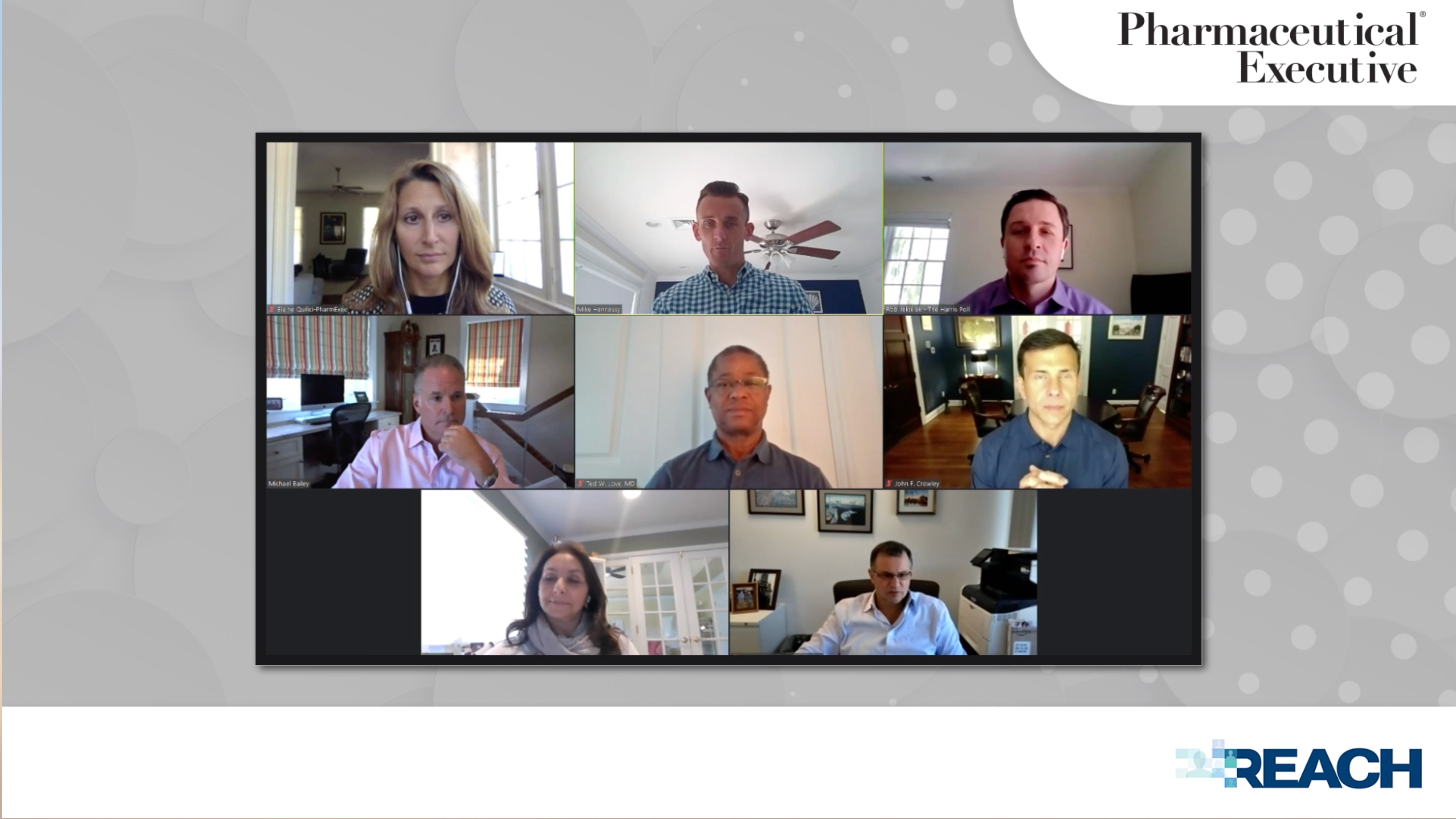
In a closed virtual roundtable on Aug. 20, Michael J. Hennessy Jr., president and CEO of MJH Life Sciences, parent company of Pharmaceutical Executive, welcomed a panel of five biopharma CEOs to discuss the improving image of their industry. Hennessy commented that despite its many negative aspects, COVID-19 has provided the pharma industry a new opportunity to show its value. The panelists shared their insights on why the industry has been able to shift its image for the better and how to maintain the momentum moving forward.
State of the union
Rob Jekielek

Rob Jekielek, managing director at The Harris Poll, moderated the event. The organization, which has been conducting public opinion research for more than 50 years, decided early on in the pandemic to focus on gathering information that could be of public service. As a result, The Harris Poll has been looking closely at the pharmaceutical industry.
“We’re in such a different place today than we’ve ever seen in the data,” said Jekielek. “As we look at the last 20 years of perceptions around the industry, it’s been hovering closer to tobacco than to tech. As the numbers move…it’s basically a doubling of positive public perception, and that’s being massively accelerated since the beginning of this year.”
Jekielek referred to The Harris Poll’s 20-plus-year tracking of the industry’s positive reputation. An industry low of 26% positive reputation in 2008 barely improved over the course of a decade, sitting at just 32% in January of this year. But as COVID came into focus, pharma’s positive reputation jumped to 53% by July 2020.
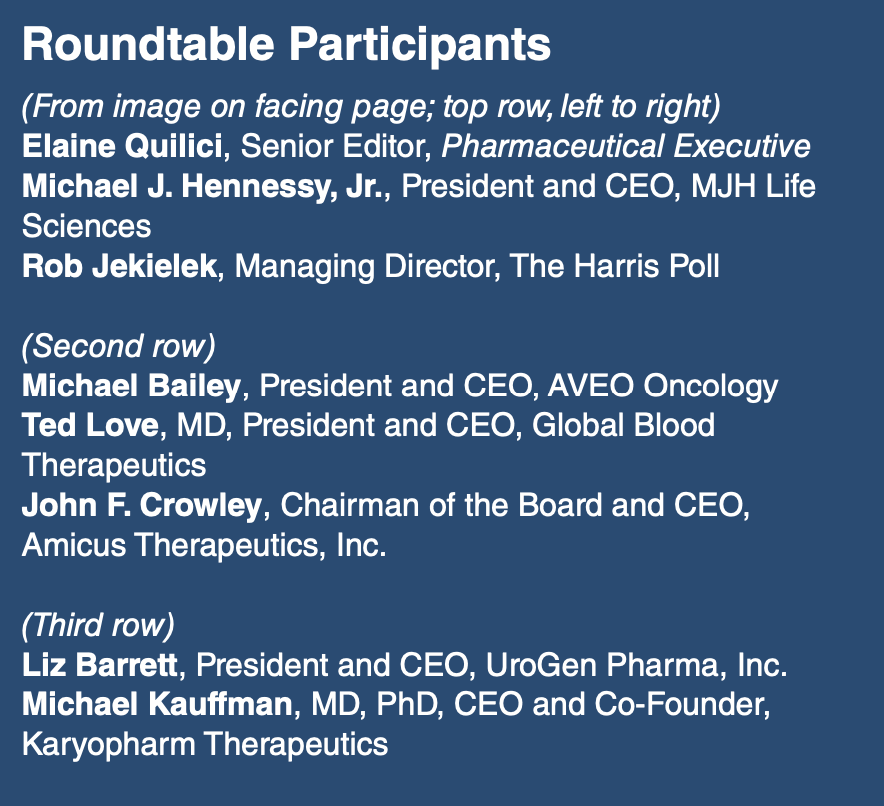
As people process news stories and other public information about pharma’s response to the pandemic, and recognize companies’ willingness to collaborate and earnest efforts to develop vaccines, treatments, and testing, their perceptions are improving. Harris Poll research also indicates the public is receiving industry communications and advertising in a positive way. “They are picking up on much more than ever before,” said Jekielek. “And it has a much more positive pull-through.”
This increase in positive perception is a key opportunity for pharma. As Jekielek expressed, this is a “once-in-a-generation inflection point for the industry.” If companies can build upon the lessons they’ve learned during COVID—including the benefits of focusing on employees, patients, educating the public, and collaboration—they might be able to finally showcase their true value to society. The following are insights our CEO roundtable participants shared regarding what’s driving the change, and how they can continue it.
Valuing employees
Employees arose as one of the most critical components driving image. From the way employees are treated to how they showcase their efforts in the community, this perception “cuts through the clutter of any message,” said Jekielek.
Liz Barrett, president and CEO of UroGen Pharma, talked about Disney’s management model: Instead of focusing on consumers, the company focuses on instilling its mission in employees, who deal with customers at the forefront. “We need to do that,” said Barrett. “We need to ensure that all of our employees feel valued, that they feel like this is a place where they want to come to work and they want to give.”
John F. Crowley
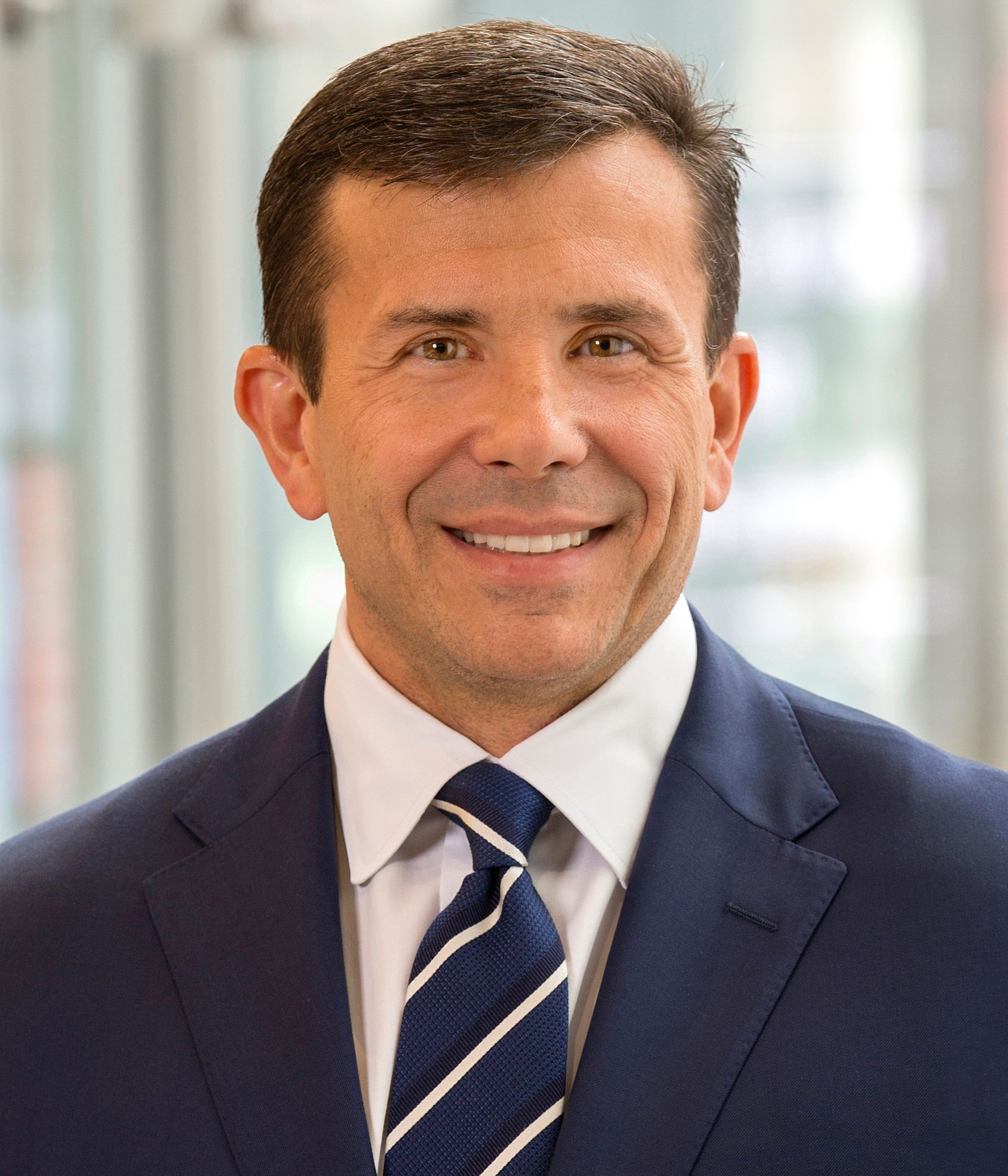
At the onset of the COVID crisis in mid-March—amid various business concerns such as financial stability and drug shipments—John Crowley, chairman of the board and CEO of Amicus Therapeutics, launched Amicus Cares, a program to listen to and connect with his team about their concerns during this disruptive time. “Within the first 30 days, I had small group sessions with every one of our 500 employees,” he said. “The first thing we did in those first 72 hours, we added a $1,000 bonus to every non-executive paycheck that Friday. We said, ‘We don’t know what extraordinary expenses you have, but here’s some help.’ It was also a symbol to people that we’re in this together and we’re here for you, and that proved incredibly important.”
At Global Blood Therapeutics (GBT), Ted Love, MD, president and CEO, focuses on the three Ps: a commitment to patients; people, or employees driven by those patients; and pennies or money to make it all work. “What we’ve really tried to do is to create a unified force,” he said. “There’s a line that people will work for money. People will work even harder if there’s a great culture that you create. But people will work the hardest if they feel they are on a critical mission. In our industry, we really have the capacity to be about a critical mission.”
Karyopharm, which had a partner in China with access to masks, lotions, wipes, and other hard-to-get items during COVID, showed it cared by delivering each employee a care package full of items. In addition, some were sent to local businesses, allowing them to remain open; veterans’ facilities in need; and patient advocacy organizations to distribute to patients who needed them to receive treatment at clinics. “I think it showed that we really do care,” said Michael Kauffman, MD, PhD, CEO and co-founder of Karyopharm.
Michael Bailey, president and CEO of AVEO Oncology, talked about how his company tapped into its core tenets of respect, trust, and transparency during the pandemic. “One of the reasons we’ve been able to adapt to this circumstance so well is because our mission is for the greater good and what we do for other people,” he said.
Bailey found the office changes around COVID to be a litmus test of those precepts and reported that the pandemic had only reinforced them within the company. His leadership team has responded to employees’ voiced needs effectively. At the same time, employees have respected the company by keeping their requests within reason. Trust has come into play in regard to working remotely. Before COVID, Bailey was not convinced that work from home could be successful, but since quarantine, he said he’s been “impressed by the increase in productivity and professionalism that the team has demonstrated.” Remote work has also eliminated the “walkabout management” model he believed in. Now, without the ability to see people face to face, AVEO has increased its formal communication with more regular and robust meetings and messages, which have increased transparency.
“At the end of the day, pharma companies are not entities,” said Bailey. “They’re a collection of people with a common mission. And to just make sure that achieving that mission is doable is one of our key responsibilities.”
Companies come together
Love expressed his pride in how employees at GBT, which focuses on sickle cell disease, supported each other during COVID. “It’s interesting that during this pandemic we’ve had issues around social justice, and sickle cell patients are 90% African American in the United States,” he said. “Those are patients who not only have a devastating disease but also suffer tremendously from social injustice in our country, social injustice in our healthcare system as well. So this has been a very powerful time for us.”
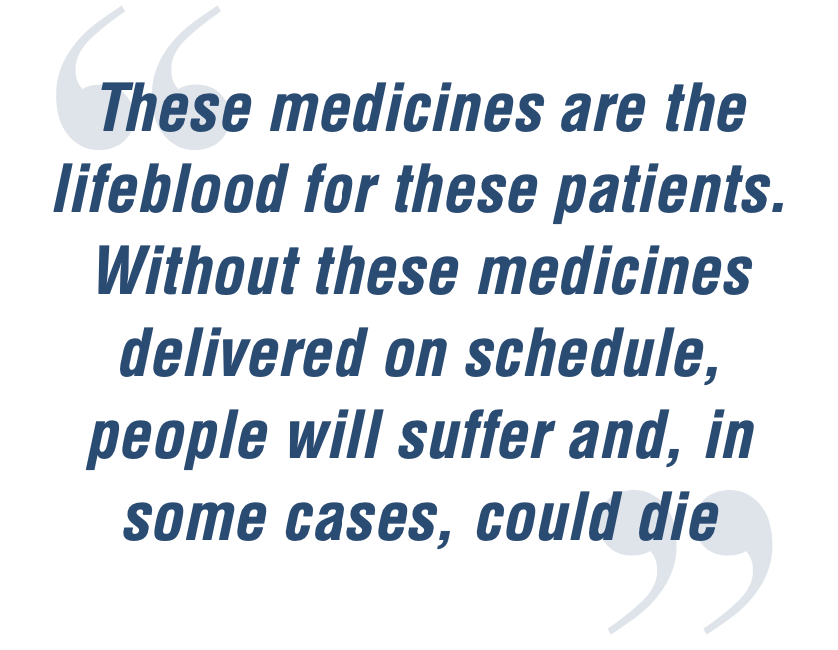
Amicus’ Crowley stated he was most proud of his team’s ability to deliver its medicines around the world, especially during the height of the crisis. “These medicines are the lifeblood for these patients,” he said. “Without these medicines delivered on schedule, people will suffer and, in some cases, could die.”
Karyopharm experienced an unexpected bump in activity when Xpovio, a drug for diffuse large B-cell lymphoma (DLBCL), proved successful in inhibiting coronavirus. “That necessitated us becoming a virology company sort of overnight, which as a small company in the middle of everything is not a good idea—especially when you’re dealing with a virus that nobody understands,” said Kauffman. He applauded his team for coming together amid the heavy workload of filing a new drug application (NDA) and getting approval for the DLBCL indication.
At UroGen Pharma, Barrett led her small team through COVID at full steam also, as the organization had to switch to a virtual launch of its first drug. UroGen worked closely with FDA to receive product approval ahead of its scheduled April PDUFA date. “I’m grateful and really proud of what the team has done to, one, ensure we got our approval, but, two, really to make sure that [Jelmyto] is accessible for patients.”
Inform and educate
Liz Barrett

UroGen’s Barrett put a premium on the need to transform advertising and communication to connect with patients. “One thing that has hurt our industry is that the general population is uninformed about what we do,” she said. “What they hear are the sound bites of a politician or the amount of money they have to pay when they go into a pharmacy. And we’ve actually, as an industry, been reluctant to do too much around education and information in advertising because we usually get criticized for it. But we have to continue to educate the population…as to what we do. I think back to my time in Novartis where we launched Kymriah, the CAR-T therapy, which is truly a cure for these patients; but we don’t really talk about it like that,” she said.
Karyopharm’s Kauffman said the industry has done an “abysmal job” of highlighting the breakthroughs that could be used to project pharma’s worth. He mentioned GBT’s sickle cell drug, Oxbryta; the many life-changing cancer and heart failure drugs; the cure for hepatitis C; and numerous new drugs for orphan diseases as examples that could have been used better to promote pharma’s value in society.
Getting the industry to work together to send unified messages is now more important than ever. With a COVID-19 vaccine on the horizon, educating the public and building an image of trust can help foster a level of comfort that makes people amenable to receiving it.
Connecting with patients
While pharma has a natural focus on patients, to really connect with them, companies need to understand the true patient experience. “It’s a mindset more than anything,” said Crowley, whose own family has battled rare disease. At Amicus, he works to build a patient-focused culture. When making decisions, he asks employees every day to consider the child or parent perspective, with self-directed questions such as: Where would you build the factory? What type of person would you hire? Where would you put your precious dollars? How would you price the medicine? How would you make sure that there’s access?
To reinforce that, Amicus has a patient hub that supports both patients and physicians. It also has a team of patient advocates within the company who act as a bridge to patient communities. The group is led by a C-suite-level executive who holds the title of chief patient advocate, Jayne Gershkowitz. “All of us should represent that patient perspective,” said Crowley. “But I ask Jayne to always be the conscience of the company. And if we’re deviating from what’s best for patients, remind us and drive us back to that true north.”
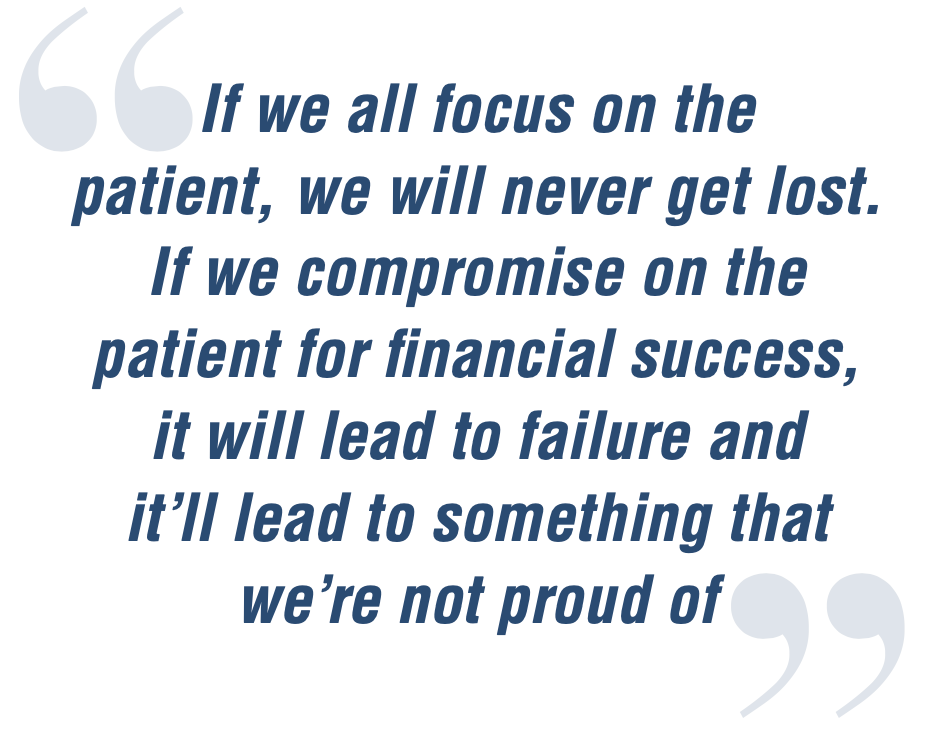
Love commended Amicus’ work in this area and said his company tries to follow a similar model. He said GBT was involved in the patient community even before it had its drug in the clinic. He and his team participated in sickle cell walks around the country, donating their own money. And when they were designing their studies, they talked to patients and integrated patients’ insights into their plans. “If we all focus on the patient, we will never get lost,” he said. “If we compromise on the patient for financial success, it will lead to failure and it’ll lead to something that we’re not proud of.”
AVEO’s Bailey said “it boils down to our responsibilities.” In the case of oncology, companies need to improve quality of life and the overall patient experience, which includes tolerability of therapies and access to treatments. “We need to think about the whole patient experience,” he said. “Getting an extra two months of life and being absolutely miserable because you’re taking a terribly toxic therapy is probably not a great tradeoff.”
Bailey lauded how the industry has evolved in this respect, moving away from a “chemotherapy poison era to targeted therapy” and encouraged pharma to continue that trend.
UroGen’s new upper tract urothelial cancer therapy is a good example of improving patients’ journeys. The treatment allows patients to avoid getting a kidney removed—something especially welcome during the COVID-19 crisis. Barrett also had patients in mind when she questioned the original protocol for Jelmyto, a six-week therapy followed by maintenance. With no evidence that the maintenance was actually helpful, Barrett ended it, instead focusing on retreatment. “There’s no drug that is benign,” she said. “[Patients] only should take the amount of medicine they need to get better. Developing our clinical studies with the idea of what’s in the best interest of the patient is important.”
Michael Kauffman, MD, PhD

Kauffman also dealt with quality of life issues in regard to Xpovio, Karyopharm’s drug that launched last year with some tolerability issues. “You don’t want to make people miserable, especially if they have two, three months to live,” he said. His team invested in supportive care to address this.
“It is remarkable that our entire messaging got weighted down on supportive care, making sure the patient felt good, almost to the detriment of the efficacy of the drug,” he added. Patient advocates’ YouTube and Twitter presence helped convince people that supplementing the treatment with some standard anti-nausea remedies was worth the benefits of Xpovio.
Industry collaboration
As individual companies pulled together through COVID, so did the industry as a whole. “We have collaborated around data and information,” said GBT’s Love. “You publish patents not only to protect you but to teach people how you did it. It provides the pathway that if they can improve upon your invention, they can have a new product. It’s very unusual to teach people how to beat your product, but our industry actually does that. That is an indirect form of collaboration even across companies which are competitive.”
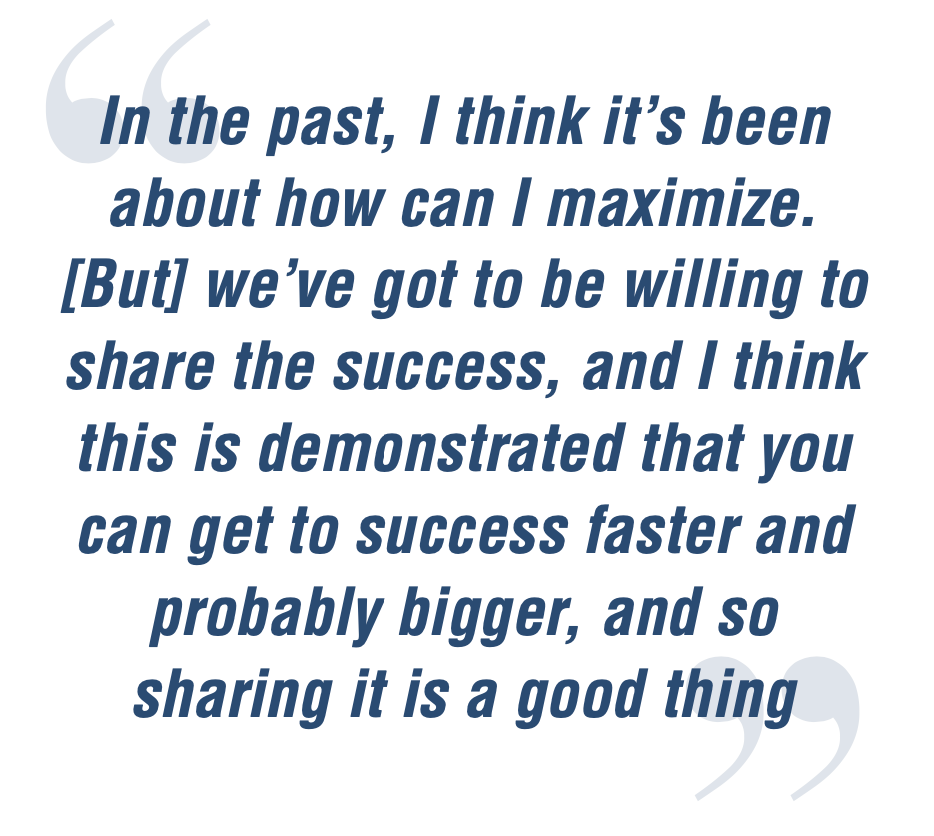
UroGen’s Barrett said now that biopharma organizations have reached out to working with one another, it would be hard to do otherwise. “In the past, I think it’s been about how can I maximize,” she said. “[But] we’ve got to be willing to share the success, and I think this is demonstrated that you can get to success faster and probably bigger, and so sharing it is a good thing.”
Bailey said collaboration and strategic partnerships have been integral to AVEO’s success—not just to share in the successes but to diversify the risk. Many times, small companies don’t have the resources to develop assets in an effective way.
“Seeing the importance of advancing these therapies and maybe losing some of the value of them, but for the greater good, to get these products to the patients that we serve is a cornerstone to what we do,” he said.
Bailey was proud of the strategic partnerships that have occurred as a result of the pandemic, such as the Accelerating COVID-19 Therapeutic Interventions and Vaccines (ACTIV) partnership, which brought together more than a dozen biopharma companies to develop an international strategy to address COVID research. “It’s very refreshing to see,” he said.
Michael Bailey
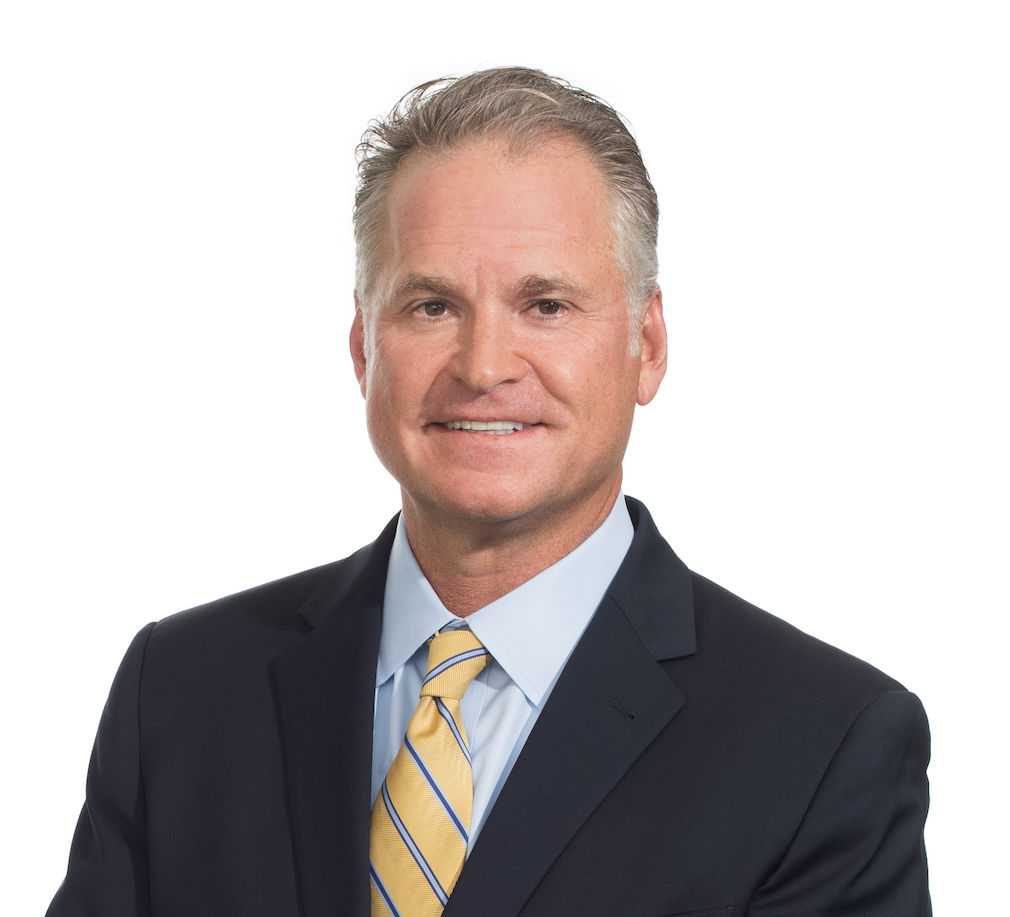
Bailey hopes that example of collaboration can be extended beyond COVID. For example, he mentioned the various oncology immunotherapies that could potentially be combined with other drugs to continue progress. “Not many people have multiple drugs within their portfolio that they can combine, so seeking out those kind of collaborations to ensure they increase in efficacy and overall quality of patients’ lives is very important,” he said.
While pharma has always had collaboration, especially in drug development, Amicus’ Crowley said COVID prompted two welcome things: increased transparency and working fast. “Look at the regulators’ response—this isn’t the typical ‘I’m going to send in my type-C meeting request and hope to get a face-to-face in 60 days,’” he said. “You’re on a cell phone call that night with regulators who have stepped up unbelievably well. And the FDA and EMA and other organizations are collaborating in a way they never have. If we can build upon that notion of collaboration, I think it would be for the benefit of everybody.”
Bailey pushed the envelope on the topic of collaboration amid competition by raising the idea of common control arms in clinical trials. In multiple studies exploring the same opportunity or disease state, such as COVID, many patients have received suboptimal or no therapy. Creating a common control arm across these studies could reduce the number of patients not receiving treatment.
“This concept, along with master protocols, were referred to by Scott Gottlieb at a conference I attended,” said Bailey. “Is there a possibility to minimize the number of patients who get nothing and ultimately identify the best solution? COVID is a perfect opportunity for that.”
Kauffman, who experienced a few logistical delays with FDA, was equally impressed with the industry’s collaboration during COVID.
“We had a protocol turned around in six or eight days, with about three back-and-forths,” he said. “People jumped on it, and it’s been great. Institutions got their ethics committees and their IRBs together quickly. Nobody was messing around here. There was…seven days a week, 24 hours a day energy. This industry is stepping up, like it always does, and they’re moving about as fast as they can.”
Managing new realities
The COVID-19 pandemic has certainly changed pharma’s usual way of doing business. Recognizing these shifts as new opportunities to meet current needs will be important to maintaining the industry’s image.
One new driver to consider is time. Whereas in the past, patients may only have thought about quick access to medicines if they became very ill, people now value getting treatments faster. This new emphasis on access will likely carry over, according to Crowley.
“The notion of broad access to medicines for all—universal access—is implicit in this whole COVID world, and that needs to be an important principle going forward,” he said.
Cost is another element that has been cast in a new light, thanks to the COVID-19 outbreak.
“This is not a time for price gouging,” said Crowley. “You’re seeing very responsible behavior in pricing. A fair return for risks; but you’re seeing that notion of responsibility in a way that maybe we hadn’t seen.”
GBT’s Love explained the importance of breaking through old ways of thinking by comparing it to racial inequities in the US. Though many individuals have tried to stand against injustice throughout the years, the executive felt the George Floyd incident was a turning point because it changed the discussion.
“It’s all about controlling the narrative,” he said. “The pharmaceutical industry is no better today than it was a year ago. Police violence is no worse today than it was a year ago, but we have changed the narrative. And, unfortunately, our industry has been the target of politicians who, in order to get elected, really focus on the one issue our industry did not create, which is out-of-pocket costs.”
Ted Love, MD

Pharma’s unique commitment to keeping patient costs low can help lead the narrative going forward. “In how many industries do their products get cheaper?” said Love. “How many industries…if you can’t afford the product, the companies provide it free? There is a tremendous amount to be proud of, and we should make sure that our politicians and others who do control the narrative are telling the truth and not using us as a tool to influence their probability of being elected. We have to make sure we never let the narrative become anything but about the truth.”
Maintaining the positive image that has begun to emerge since COVID will require continued effort on all levels—from within companies to across the industry. But pharma is off to a good start in rebranding its overall message.
“We’re not just in it for the profits,” said Barrett. “We are in it because we believe that we truly make a difference in human health and that we’re needed, and the industry has come out to demonstrate that.”
Elaine Quilici is Pharm Exec’s Senior Editor. She can be reached at equilici@mjhlifesciences.com.
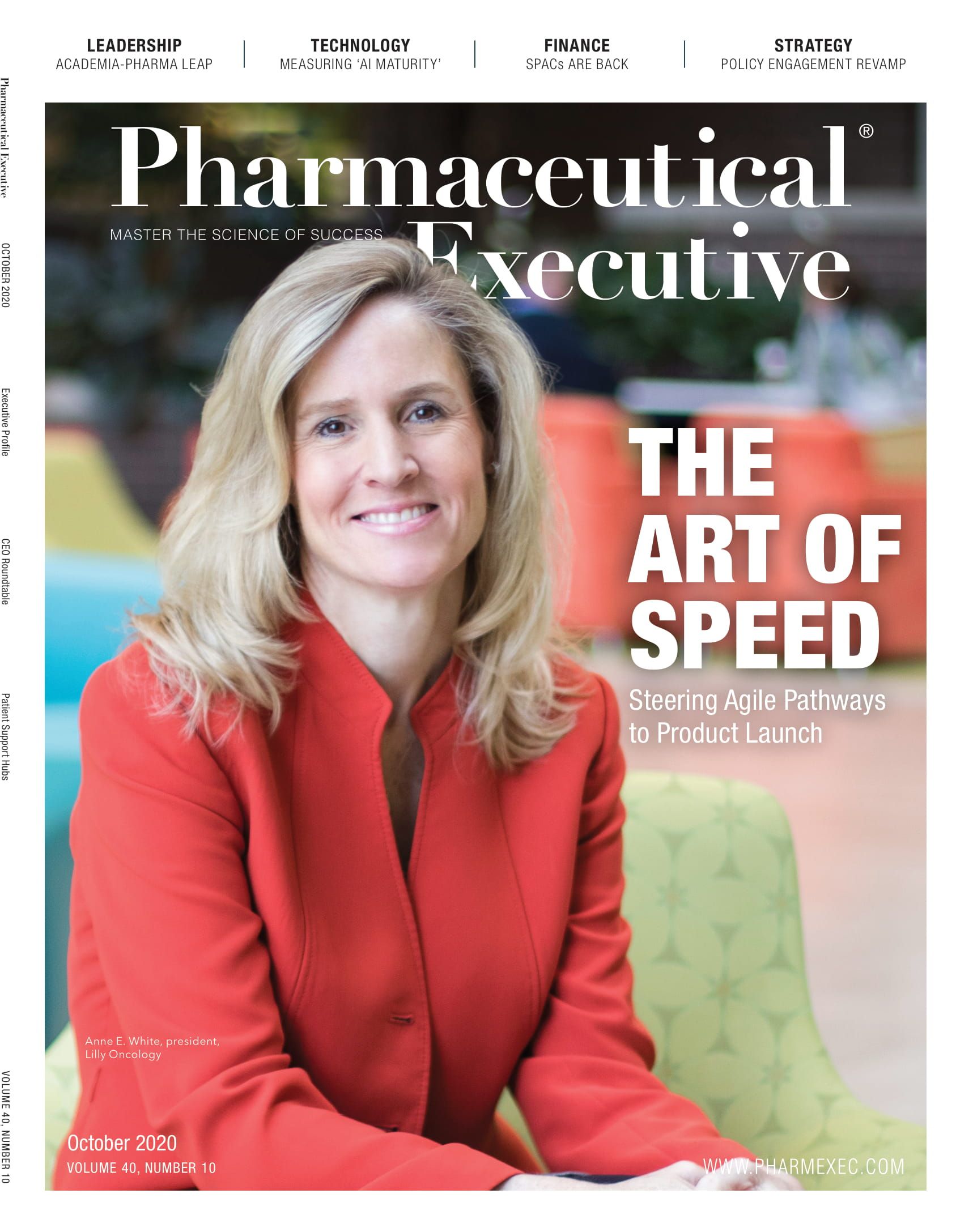
An Evolving ‘Opinion’ Landscape: New Paths—and Synergies—for Pharma KOLs & DOLs
October 13th 2023Industry experts discuss the relationship between digital and traditional (key) opinion leaders and how companies are adjusting their strategies to harness the unique brand engagement benefits each role can provide in driving better patient outcomes.